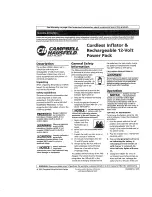
BHK-1/2-MG 030916
3-61
are shown using local sensing since the drop across the power leads is usually negligi-
ble compared to the output voltage. However, when very precise control of output volt-
age applied to the load is desired, remote sensing should be used. Contact Kepco
Applications Engineering when special configurations are indicated.
3.9.3.1
AUTOMATIC PARALLEL OPERATION
This operating configuration (see Figure 3-23) is characterized by the fact that each power sup-
ply is independent and must be controlled (programmed) individually, either remotely—via either
the GPIB bus or by analog means—or locally via the keypad. Practical considerations suggest
that identical units be configured to operate in voltage mode - current limit, controlled from the
local keypad.
For most cases, when the output current is less than the maximum current of a single supply,
only the supply with the highest actual output voltage will control the output; the other supply will
be inactive. When the current limit of the working unit is reached, it will go from voltage mode to
current mode and the other unit will begin to operate in voltage mode, controlling the output volt-
age and delivering the difference in current between what the load demands and the current
limit of the first unit. This is especially true when the power supplies are working with remote
sensing and there is a minimum difference (one least significant bit:1 LSB) between the actual
output voltages of the two power supplies.
When using local sensing, it is possible for both power supplies to deliver current to the load at
the same time. This will occur if the power supplies are delivering precisely the same output
voltage, and the lead losses are balanced. It can also occur if the power supplies deliver nearly
the same voltage, but the lead losses compensate to make the output voltages identical.
The maximum current that can be delivered by the parallel combination is the sum of the maxi-
mum output current for each individual power supply.
RECOMMENDED PROCEDURE.
The following steps are recommended to ensure the combi-
nation of power supplies (power assembly) is connected and set up properly for automatic par-
allel operation. Identical models are recommended for parallel operation.
1. With the units turned off, perform all external wiring (see Figure 3-23). If possible, use a
properly rated switch between the power supply and the load.
2. Apply power to the units:
a. If a load switch is used, open the switch. Set POWER switch of both units to up position
to turn power on.
b. If load switch is not used, Set POWER switch of both units to up position to turn power
on, then press OUTPUT ON/OFF key once on each unit to disable the output.
3. Program Unit A as follows:
a. Program IsetA to 1/2 the expected load current: I
LOAD
/2.
b. Program VsetA to:
where:
E o
E o m a x A
2500
------------------------
+
Summary of Contents for BHK-MG Series
Page 2: ......
Page 6: ......
Page 16: ......
Page 18: ...xii BHK MG030916 FIGURE 1 1 BHK MG 40W SERIES PROGRAMMABLE POWER SUPPLY...
Page 26: ...1 8 BHK 1 2 MG OPR 030916 FIGURE 1 3 RA 24 RACK ADAPTER WITH TWO 1 2 RACK BHK MG 40W UNITS...
Page 35: ...BHK 1 2 MG SERIES 030916 2 3 FIGURE 2 2 BHK MG SERIES REAR PANEL CONTROLS AND CONNECTIONS...
Page 100: ...3 54 BHK 1 2 MG 030916 FIGURE 3 20 SERIES AUTOMATIC CONFIGURATION...
Page 113: ...BHK 1 2 MG 030916 3 67 FIGURE 3 25 PARALLEL MASTER SLAVE CURRENT MODE CONFIGURATION...
Page 150: ......
















































